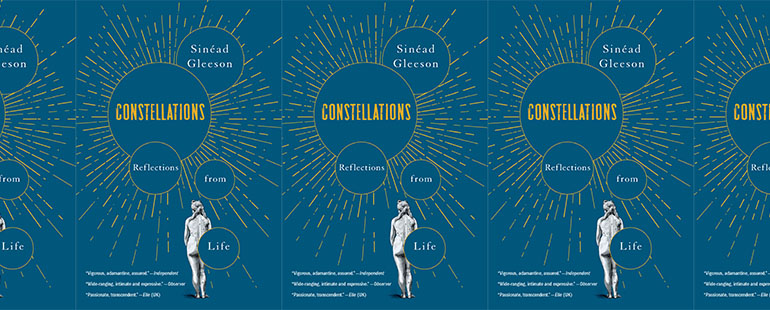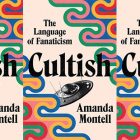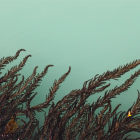Women’s Bodies and Constellations: Reflections from Life

The portrayal of women’s bodies in Irish literature, and in wider society, has created an impossible contradiction. Catholicism, of course, has played its part in the lose-lose scenario in which women’s bodies represent both the holy untarnished vessel of motherhood and the tainted evidence of carnal sin. But the canon of Irish literature read and taught in Ireland, as well as Irish studies in the United States and across the world, has played its role in framing and narrating a limiting role for Irish women, as well. The exclusion of women authors from the literary works lauded as important and worthy, defined by a male-dominated industry of publishers, critics, and academics, denigrated the experience of Irish women, rendering it banal, unworthy of public discourse and literary merit. While in Irish literature today the inclusion of women’s stories and reflections on Irish society and identity has elevated experiences of motherhood, caring, sexual violence and health, and gender discrimination by political, cultural, and religious institutions, there remains a significant “profound deafness to the female voice,” as described by authors Sinéad Gleeson and Anne Enright. This deafness, marked by Irish men in the industry admitting to not reading work by women and the continued over-representation of work by men in criticism, publishing, and academia, can lead to a particularly warped or incomplete view of the Irish past and present for international readers.
Today’s U.S. publication of Irish author and critic Sinéad Gleeson’s debut essay collection, Constellations: Reflections from Life, however, marks a contribution that will widen our understanding of Irish identity. Her essays chronicle life in the human body as it experiences illness, love, grief, and motherhood. Through intimate personal narrative and outward analysis of history, art, and culture, these experiences manage to create universality through the specific experiences of navigating pain and pleasure in an Irish woman’s body. The book’s aesthetic significance lies in its deep thought, nuanced metaphors, and lyrical prose; it is also the narrative voice I needed as an American becoming a mother in Ireland and failing to assimilate.
The absence of women from the Irish canon, perhaps best highlighted by the 1991 publication of the Field Day Anthology of Irish Writing, contributed to exclusively by men, has been critiqued for decades. The selection of literary works deemed worthy of inclusion in the curriculum of Irish schools and universities, and hence reprinted year after year, was subject to cultural influences and power dynamics in Irish society. The now-famous names of James Joyce, Samuel Beckett, Jonathan Swift, W.B. Yeats, and Seamus Heaney became (and remain) the appointed authors of the definitive Irish stories, to the exclusion of women writers left out of anthology after anthology of Irish writing.
Gleeson, however, has edited two anthologies of Irish women writers, and Enright has been a force in the continued demand for gender parity in literature. Enright, for example, used her final lecture as the Laureate for Irish Fiction in 2017, “The Count: What the Figures Say About Being a Female Irish Writer Today,” to criticize the ongoing gender imbalance in publishing, book reviews, and awards, as well as the perception of women’s writing by men such as Enright has encountered during her career. She also questioned the continued insistence that men have more right to have a voice and bear witness to issues of national identity in their writing.
Women have not been able to loudly narrate their own life stories in literature; instead, they have been relegated to a supporting role of mother, temptress, or servant in other’s works. Their bodies have been used to symbolize—as Hibernia, Mother Ireland, Cathleen Ni Houlihan, and the Virgin Mary—versions of evolving Irish nationalism over time. According to Dr. Heather Ingman, an academic specializing in Irish women’s writing, “women were passive embodiments of Irish ,” rather than individuals or a collective with agency in the shaping of the nation’s literature. Similarly, Caitriona Moloney and Helen Mahony, U.S.-based scholars in Irish literature and the editors of Irish Women Writers Speak Out: Voices from the Field (2003), note that “the foundation of Irish culture—state control of women’s reproduction, and the nationalist and religious mythologies, Virgin Mary and Mother Ireland”—has framed all Irish writing and indeed limited any critical reception to women writing the stories of their own bodies.
Perhaps the trivialization of novelist Edna O’Brien’s work in categorizing it as “romance” or “autobiography,” despite her continued willingness to engage with issues of Irish identity by writing about sexuality, abortion, and gender dynamics, is the clearest example of this contradiction. While Maloney so analyzed O’Brien’s work as “fiction [that] intensely interrogates the cultural and political imperatives that reproduce femininity in Ireland by showing the ideals…and the impossibilities of actually living up to them,” Brian Fallon, the chief art critic of the Irish Times, reviewing Down by the River (a 1997 novel about a teenager refused an abortion after being raped and impregnated by her father, based on a high-profile legal case) dismissed O’Brien as “not appear[ing] to be greatly interested in writing novels on other than sexual subjects.” While the existence of such a review at all is testament to O’Brien’s international achievements and recognition, its contents are dismissive and representative of the insistence that women writers’ subjects have been considered private, rather than political works capable of instigating social change. Despite the dystopian patriarchy described in O’Brien’s depiction of rural Ireland and the lecherous judges and politicians, Fallon reduces her characters in describing them as “almost all unpleasant or unsympathetic,” and appears to intentionally ignore the social critique.
The Irish writers included in Moloney and Mahony’s Irish Women Writers Speak Out noted the irony of a national identity—formed by religion—“prohibiting sexuality for women while mandating motherhood.” Indeed, Catholic ideology reveres the impossibility of a virgin becoming a mother while prohibiting women from any role in the Church’s hierarchy and authority. This contradiction has been baked into the modern state. Gleeson notes the centrality of the mother figure to Irish history and to her own understanding of her body, identity, and family, as well as the “hierarchical structure of the family” in general, where “the Irish mother managed to occupy the top slot while holding the least amount of power.” Despite revelations of state and religious abuse against Irish unmarried women who became pregnant and were locked in mother and baby homes, and despite an outpouring of storytelling from women sharing the realities of being forced into motherhood or into keeping crisis pregnancies secret due to the (recently repealed) constitutional ban on abortion, state policy and services continue to define women as homemakers. The Irish Constitution enshrines a women’s power in the private or domestic spheres—Article 41.1.2 states “that by her life within the home, woman gives to the State a support without which the common good cannot be achieved” and positions her engagement with public life as the “neglect of their duties in the home.”
Grounding readers in the bodily facts of motherhood as well as sickness and death, Gleeson doesn’t avoid the vulnerability of women’s bodies or the human body in general, but her dogged insistence that these physical details be considered in connection to intangible concepts of spirituality and identity has added to a collective reframing of Irishness around women and mothers in which their voices are worthy of inclusion in the literary canon. This is particularly the case for nonfiction writing, a genre based on truth and facts. By elevating the experience of inhabiting a woman’s body, Gleeson illustrates (and blows up) the power structures in Irish society that had previously erased women’s bodies and voices from the formation of a national identity., I lacked the model for writing true stories of Irish motherhood that incorporated personal experience and political critique before reading Gleeson’s new collection. For years after becoming a mother I struggled to reconcile my love for my children with my resentment at the presumption that motherly love could only be shown through martyrdom to the family. Considering I had chosen to leave my homeplace and country at twenty four, my story certainly didn’t fit in the dominant model of domestic motherhood found in public discourse and literature. Neither did I feel in a position of power as I ruminated on my changing reactions to the care provided by Ireland’s health services through two pregnancies, one miscarriage, difficulties breastfeeding, and postpartum depression. The challenges experienced by different women navigating a health and political system in which women’s bodies are treated as unruly or difficult are stories that were typically hidden or shared in hushed tones around kitchen tables, not markers of any universal Irish experience. As a result, I reverted for years to the default: silence.
Gleeson’s powerful and questioning voice, however, to which she credits to a constellation of bodily scars, assures me and others that there is no permission required to voice this story. These scars, and the sexism mapped behind many of them, are the makers of her voice and her thinking, both of which are worthy of literary and public credibility and critique. Utilizing the wide boundaries of the essay to incorporate lyricism, poetry, memoir, and research into her narratives, Gleeson tells new stories, rather than sticking to those associated with Irish identity. In including lofty yet intimate content and narration in her collection, Gleeson makes clear her belief in reframing the history of Ireland’s historical and contemporary canon to ensure excluded stories and truths are highlighted. Too, Gleeson’s contribution to the Irish canon challenges American readers to engage with a less comfortable version of the story of Ireland.
Recent Irish-interest nonfiction releases in the U.S. have covered familiar and comfortable terrain for American readers—a son’s relationship to his father and their family farm; the murder of an innocent woman by paramilitaries during the “Troubles”; and an Irish son’s longing for a homeland (and father) from which he’s disconnected. But just because the Irishness of Gleeson’s essays are less-easily recognizable than books on political and religious conflict, the famine, or rural farming life doesn’t make them less useful for pondering the past, present, and future of Irish identity.
While Constellations doesn’t appear to be positioned as an “Irish” story by U.S. publishers, or at least its cover doesn’t contain green pastures or black and white photos of children in wooly cardigans, the lyrical prose will easily enter these essays into a literary tradition that is, perhaps, borderless in its themes of abortion, illness and healthcare, female adventurers, and loss. The wide-ranging collection covers the author’s decades of sickness, pain, and recovery—from arthritis as a young girl and months spent in a body cast, to a leukemia diagnosis and treatment, and then to difficult pregnancies. There are essays on hair, ghosts, first love, the McGill Pain Index, and abortion. While the thread of bodily pain and pleasure is constant, the book doesn’t feel confined or constricted as tales of adventure and art expand Gleeson’s reflections beyond her own boundaries. Yet these expansions consistently contract back to her body, just as our lives will repeatedly and ultimately contract back to our own.
In the telling and analysis of her encounters with hospitals and doctors, we see that Gleeson has always been aware that her female body was a factor, even an inconvenience, in her treatment. Despite the universality of sickness and health, Gleeson’s awareness that women’s bodies, particularly Irish women’s bodies, will experience these conditions uniquely never wavers. In “Hills and Chalk Bones,” a surgeon tosses a towel over teenage Sinéad, “growing impatient” as she cried from the embarrassment of being examined in a swimsuit. The pain and trauma of being confined in a hip spica for ten weeks, cut without anesthesia, told to calm down by the male doctors as a rotating blade sliced into her leg, and eventually diagnosed with “just the baby blues” by a surgeon during her second pregnancy when in fact her twenty-four-hour pain was the result of an irreparable deterioration of the hip all demonstrate this understanding, and each experience is contained by the story of Gleeson’s own faith. Her childhood piety and hope for a miracle, formed by Irish Catholicism and later a new faith in the holiness of stories shaped by complicated bones, seems symbolic of Ireland’s evolving relationship to a Catholicism that was integral to constructions of Irish nationalism. Like most of her generation, Gleeson no longer practices Catholicism, but still expresses a strong faith in other types of miracles and spirits like those of the women in her family now deceased. Despite her adult rejection of Catholicism, however, the power of the otherworldly, particularly when it comes to healing, holds a prominent, and recognizably Irish, place in Gleeson’s own experiences.
A decade spent in Ireland found me often baffled at the everyday belief in visions, faith healers, and miracles that existed among friends and colleagues, often alongside traditional Catholic ritual—but also baffled at the blanket insistence by social commentators that Catholic Ireland was dead. How could it be dead when my son had to provide a baptism certificate to start school? How could it be dead while my healthcare was presided over by ward “sisters” and the treatment of my pregnancy loss determined by Catholic teachings on abortion? In her reflections on the intersection of the spiritual and paranormal, Gleeson stakes ownership over the folklore and modern spirituality in Irish culture, once cornered by men in robes, while acknowledging the ongoing culture of Catholicism in Irish society but also a different creation of faith in words, art, and people. She writes of her 1988 pilgrimage to Lourdes, “Metaphysical or impalpable, all the elements of religion are made real in these holy spaces,” and reminds us that all the stories we tell, whether of faith, ghost, or origin, are made real by our physical reaction or interaction with the words. Gleeson repeatedly pushes us to conflate the body and brain.
Perhaps one of Gleeson’s most creative subversions of being and identity lies in her writing on blood, its physicality and its symbolism. Blood represents family, origins, unbreakable bonds, and life and death, but “60,000 Miles of Blood” takes us beyond this familiar (and comfortable) understanding. The eight-part essay, organized by blood type, weaves analysis of the body’s use of blood, society’s knowledge of blood, and the value of blood with the narrative about the author’s transfusions for various surgeries and living through leukemia in her twenties, covering an exhilarating range of thought and movement. From “A-” to “B+” we move from a hospital room in Dublin, in which “blood geysered” from the author’s chest as a nurse attempted to cut out a Hickman line used for chemotherapy, to a performance art installation in which an artist lies on a blank canvas bleeding from needles in his arms. Circling around blood’s visceral color and the symbolic meanings of mortality and everlasting life, Gleeson connects her readers through 60,000 miles of blood vessels shared by each human body before asking us to understand how blood flow, inward and outward, is also value-dependent on the source. For women, bleeding is a monthly ritual with its own symbolism and tradition. Gleeson compares the shame and taboo placed on menstruation, despite its literal “signifier of fertility,” to the importance placed on blood and bleeding from other sources and in other contexts, like the Catholic belief in transubstantiation and associated ritual of drinking Christ’s “blood.” The wildly varied reactions and weight attributed to blood, despite its universal symbolism of life and death, is representative of the hierarchy of worthiness placed on symbols of Irish identity in literature.
The origin of our bloodlines and authenticity of our past and current national identity is a common topic in Irish American culture, particularly encouraged by the Irish policy that allows for citizenship by descent. In contrast to the nuanced metaphors around blood explored in this collection, Irish nonfiction stories popular with American readers usually favor a simpler, more familiar approach to blood—as a judgement on nationality. But while Gleeson’s adult leukemia diagnosis makes her curious about her DNA because of the strain’s higher incidence in Latin American and Iberian people, “the rainbow line of branded tubes” used to collect her blood in the hematology ward also makes her interrogate the idea of receptacles-as-art, particularly the work of Barton Beneš. The origin and ethnicity concept of “blood” is an easy fascination to Americans obsessed with chasing down their ancestry with at-home DNA testing kits but Gleeson’s essay challenges us to consider that blood can also represent a commitment to art and life and if that art is writing then its agenda can be to declare possession.
For too long the declaration of possession over the stories of Ireland went unchallenged but nonfiction writing like Gleeson’s is reclaiming an incomplete discourse. Through her critical but persistently positive insistence in the beauty of her body, scars and pain and all, Gleeson claims agency over her own voice and helps (re)claim agency over the story of what it means to be a woman in Ireland’s past and present. Her rationality and logic combined with her faith in the miracles performed by individual bodies and their shared humanity is a testament to her talent but also to the shared resiliency of Irish women. While stories of political rebellions, rural farming families, and emigration are of course part of understanding the making and remaking of Irish identity, we should also understand who and what was excluded from this version of Irishness. Gleeson’s writing challenges readers in the U.S. to revise their understanding of Irishness to include the experiences of women, mothers or not, and their historical lack of choice in how their stories were told.
“To be constantly reminded that you are female is to be pushed back into your body, over and over, when, as a writer,” Enright said, “you function not as a body, but as a voice.” Gleeson’s contemplation of her own life and identity as a writer seems to reject this dichotomy and perhaps assert power from the very bodies that previously limited the voices of Ireland’s women.
This piece was originally published on March 24, 2020.



